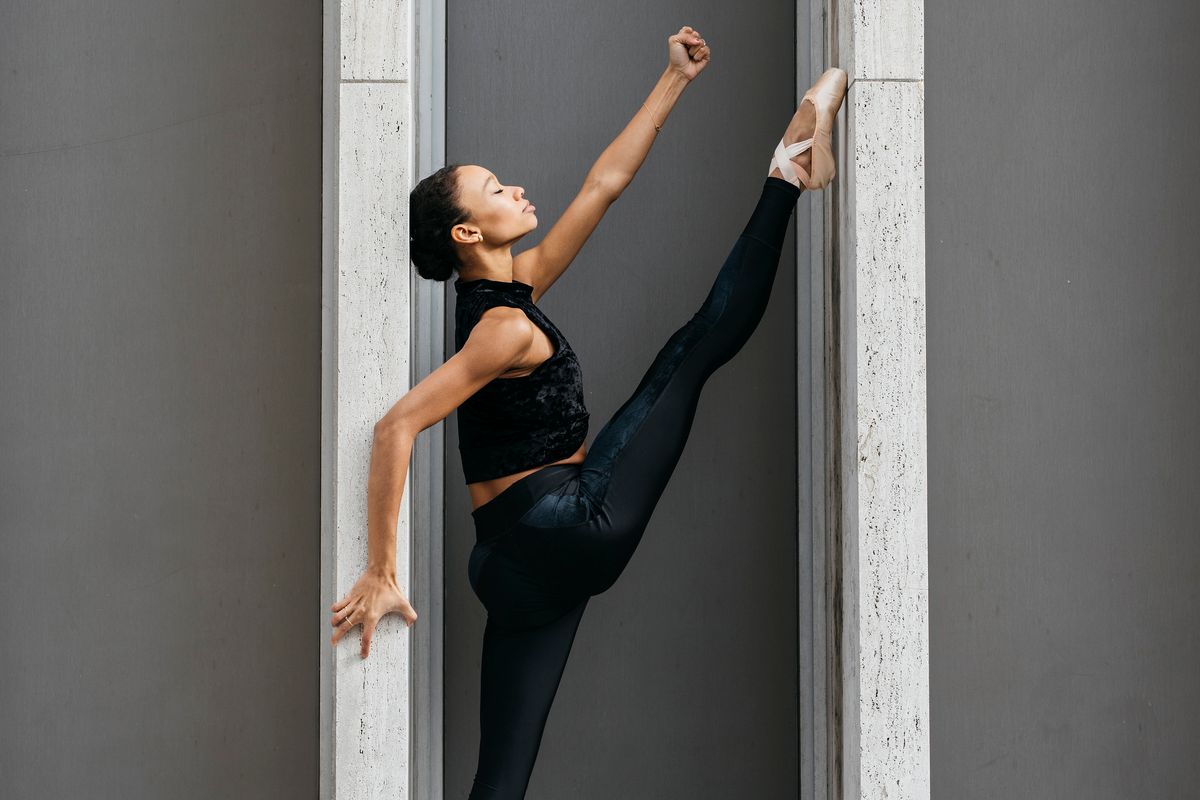The Black Iris Project Photographed 100 Black Dancers Around NYC in Celebration of Nelson Mandela's Centennial
In 2016, choreographer Jeremy McQueen founded the Black Iris Project with the aim of bringing together predominantly minority dancers each summer to create works that celebrate diversity and black history. This year, he’s mixing it up. In honor of South African anti-apartheid leader Nelson Mandela’s 100th birthday on July 18, McQueen created 100 FISTS in collaboration with photographer Melika Dez. Each day, for the hundred days leading up to Mandela’s birthday, BIP has released a photo on social media of a black dancer in a New York City location, posed with their hand in a fist. Each photo is paired with an inspirational quote by Mandela. Pointe caught up with McQueen to find out how this project came together and what’s next for the fledgling collective.
How did you come up with the idea for 100 FISTS?
I was looking at how we could continue to further our mission at BIP to continue engagement and increase visibility of black artists while also continuing to share the stories of black figures in history. This year is Nelson Mandela’s 100th birthday, and I wanted to celebrate that through community, which is what our collective is all about and is what Mandela was really all about. We looked at what was popular on social media, and people love dance photos. So a year ago I decided to pull together 100 dancers and photograph them—but make something not just about technique, but deep and meaningful, where dancers come together to admire and spread the love about this great historical figure.
Where did the name for the project come from?
A number of photos of Mandela throughout history have been shown with a fist, and when I made MADIBA, my ballet based on Mandela’s life, I used a lot of fists. It also references the Black Lives Matter movement. Everyone had to have at least one fist in their photo.
What was the timeline of the project?
We shot 70 dancers during four days in the middle of a storm this winter, and then we shot 30 dancers in two days in the spring. Each dancer was given 10 minutes to get a shot; some came totally prepared and were done in three minutes, and some took longer.
The photos are all shot in quintessential New York locations. How does the city play into this project for you?
It’s part of the message. We’re an NYC-based ballet collaborative, though we do perform all across the country and are honored to do so. I’ve called NYC my home for 13 years, and I think there’s something so inspiring about the vibrancy of the city. I was inspired to start BIP after graduating from the Ailey/Fordham BFA program. I’d made all of these friends, and then once we started to become professionals we never really got to come together and dance together. So I wanted to honor where our collaborative started, and why we all love the city.
How did you find the dancers?
Most of them were in my network to begin with. The black dancer circle in New York is fairly small. I sent a Facebook message to every black dancer I knew in NYC, and said, “Hey, this is what we’re doing. If you’d like to join us, please sign up.” That’s how we got the first 70 dancers. The later 30 were a curated list hand-picked by me. I wanted to include as many different dance companies as possible, whether it be American Ballet Theatre, New York City Ballet, Ballet Hispanico or Dance Theatre of Harlem, and some of those dancers were on tour or not available in the winter.
What do you hope that viewers on social media will get out of seeing the project?
Nelson Mandela was a great champion for change, and a pioneer for bringing people together and collective organizing and how to protest. He and his supporters overturned the South African apartheid. It’s really meant as an inspirational and motivational tool despite our political climate and what we might be going through in our personal lives.
What do you plan to do with these photos after July 18?
I would love, love, love to have these photos in a gallery somewhere. I think it would be so dynamic and wonderful.
What’s next for the Black Iris Project?
Our mission is to create one new work a year that’s rooted in either black history or the black experience. Our 2018 ballet is called A Mother’s Rite and is inspired by a number of mothers who have lost their children to police brutality or racially charged violence. It will be performed alongside MADIBA, my ballet on Mandela, on August 16 in Harlem. Our 2019 ballet is a Harriet Tubman ballet that follows her journey.















